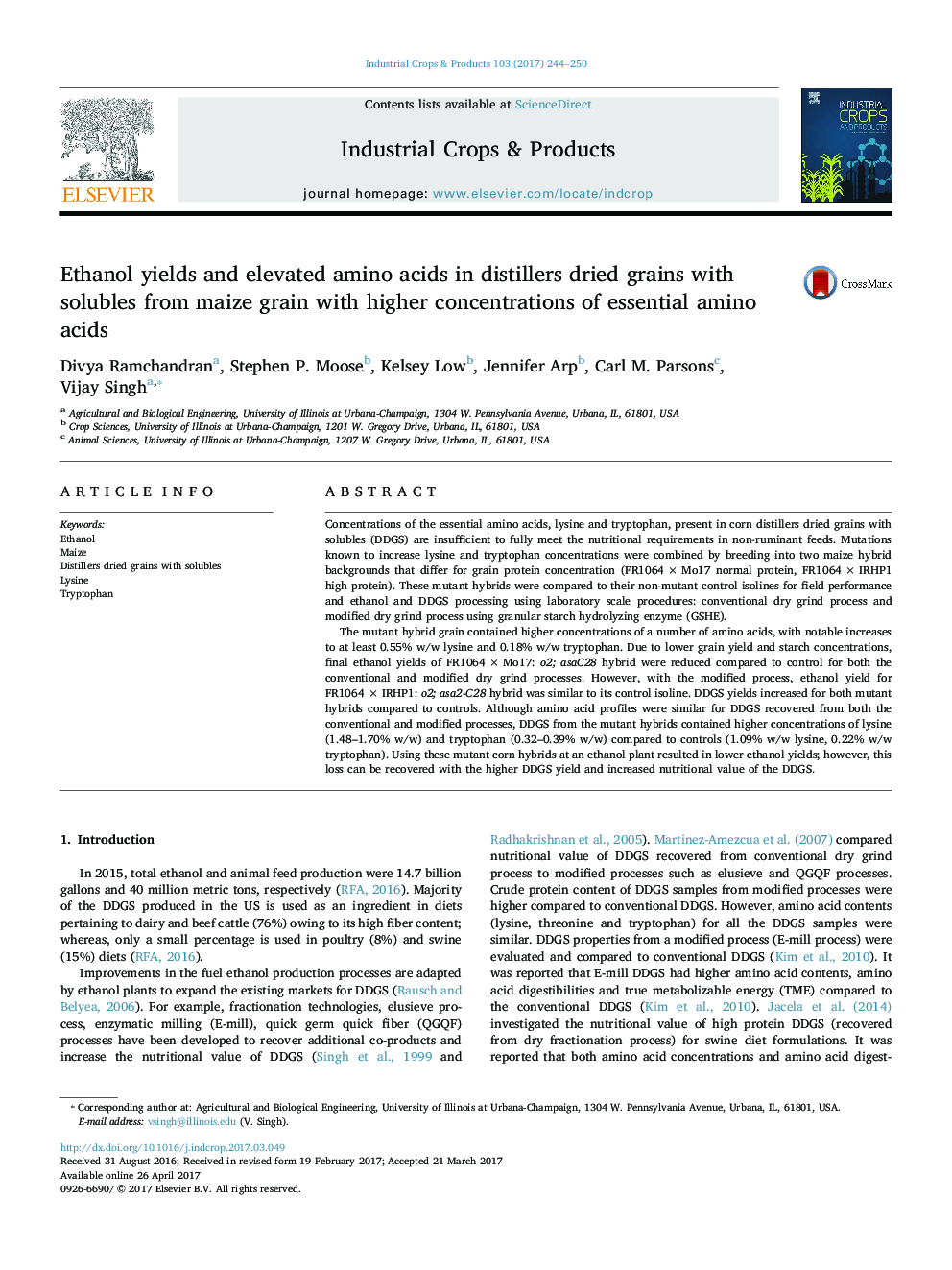| Article ID | Journal | Published Year | Pages | File Type |
|---|---|---|---|---|
| 5761933 | Industrial Crops and Products | 2017 | 7 Pages |
Abstract
The mutant hybrid grain contained higher concentrations of a number of amino acids, with notable increases to at least 0.55% w/w lysine and 0.18% w/w tryptophan. Due to lower grain yield and starch concentrations, final ethanol yields of FR1064Â ÃÂ Mo17: o2; asaC28 hybrid were reduced compared to control for both the conventional and modified dry grind processes. However, with the modified process, ethanol yield for FR1064Â ÃÂ IRHP1: o2; asa2-C28 hybrid was similar to its control isoline. DDGS yields increased for both mutant hybrids compared to controls. Although amino acid profiles were similar for DDGS recovered from both the conventional and modified processes, DDGS from the mutant hybrids contained higher concentrations of lysine (1.48-1.70% w/w) and tryptophan (0.32-0.39% w/w) compared to controls (1.09% w/w lysine, 0.22% w/w tryptophan). Using these mutant corn hybrids at an ethanol plant resulted in lower ethanol yields; however, this loss can be recovered with the higher DDGS yield and increased nutritional value of the DDGS.
Related Topics
Life Sciences
Agricultural and Biological Sciences
Agronomy and Crop Science
Authors
Divya Ramchandran, Stephen P. Moose, Kelsey Low, Jennifer Arp, Carl M. Parsons, Vijay Singh,
